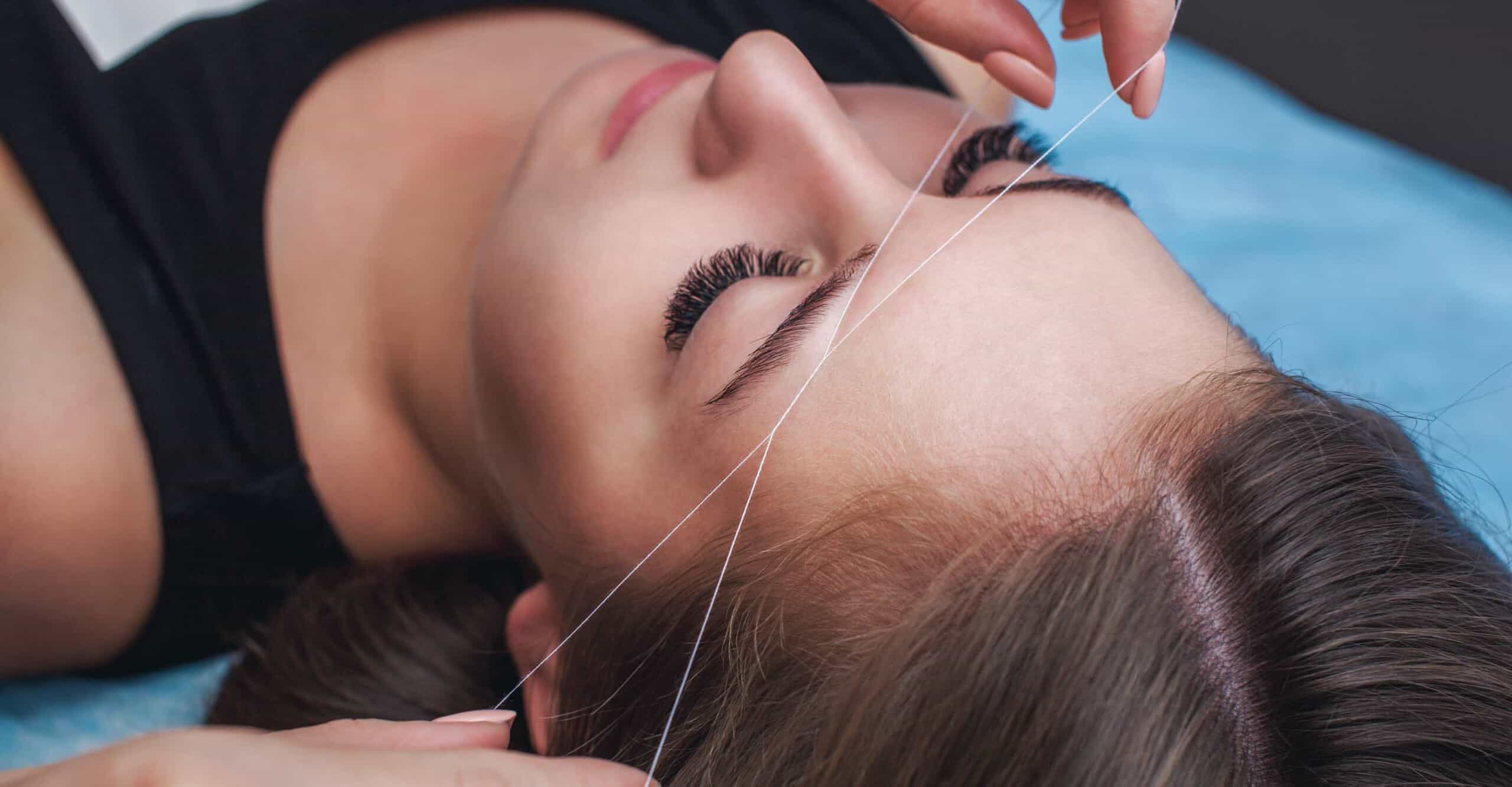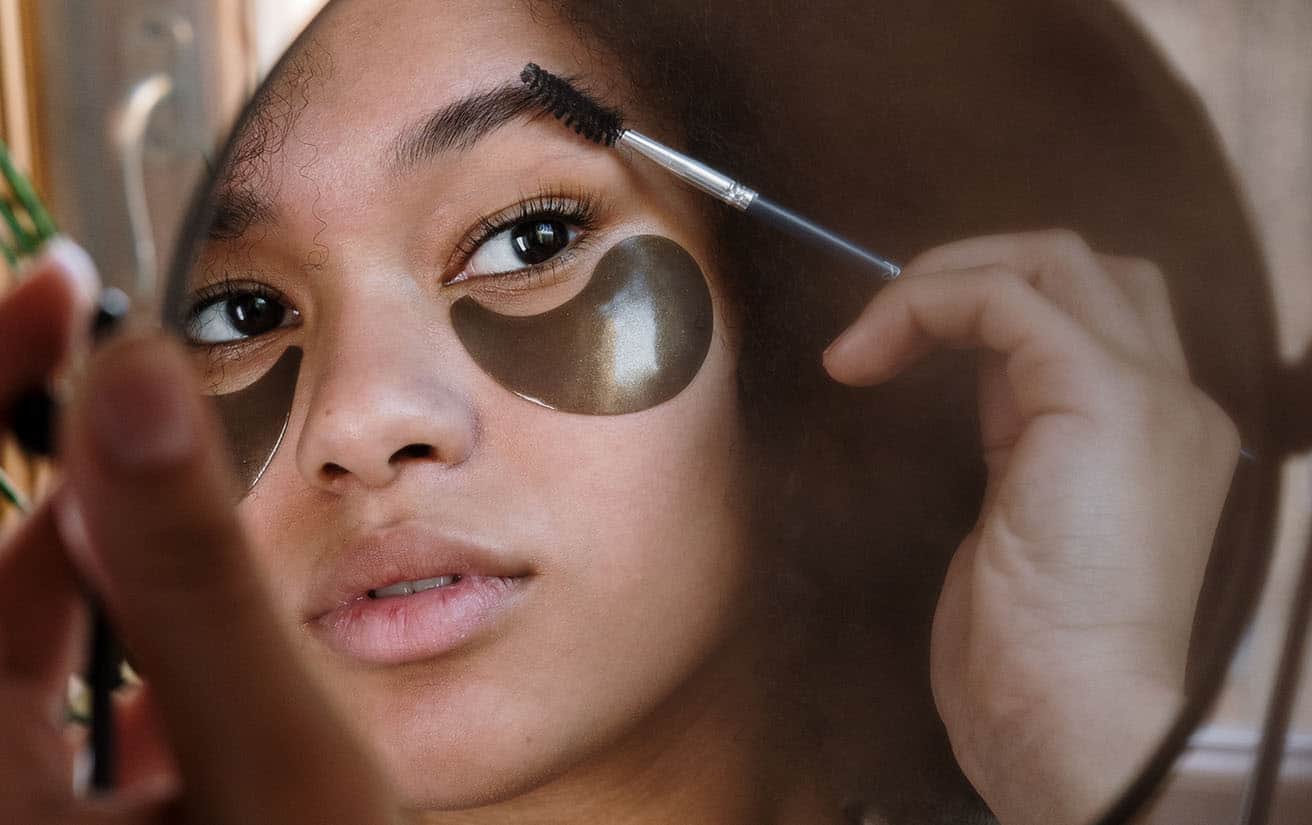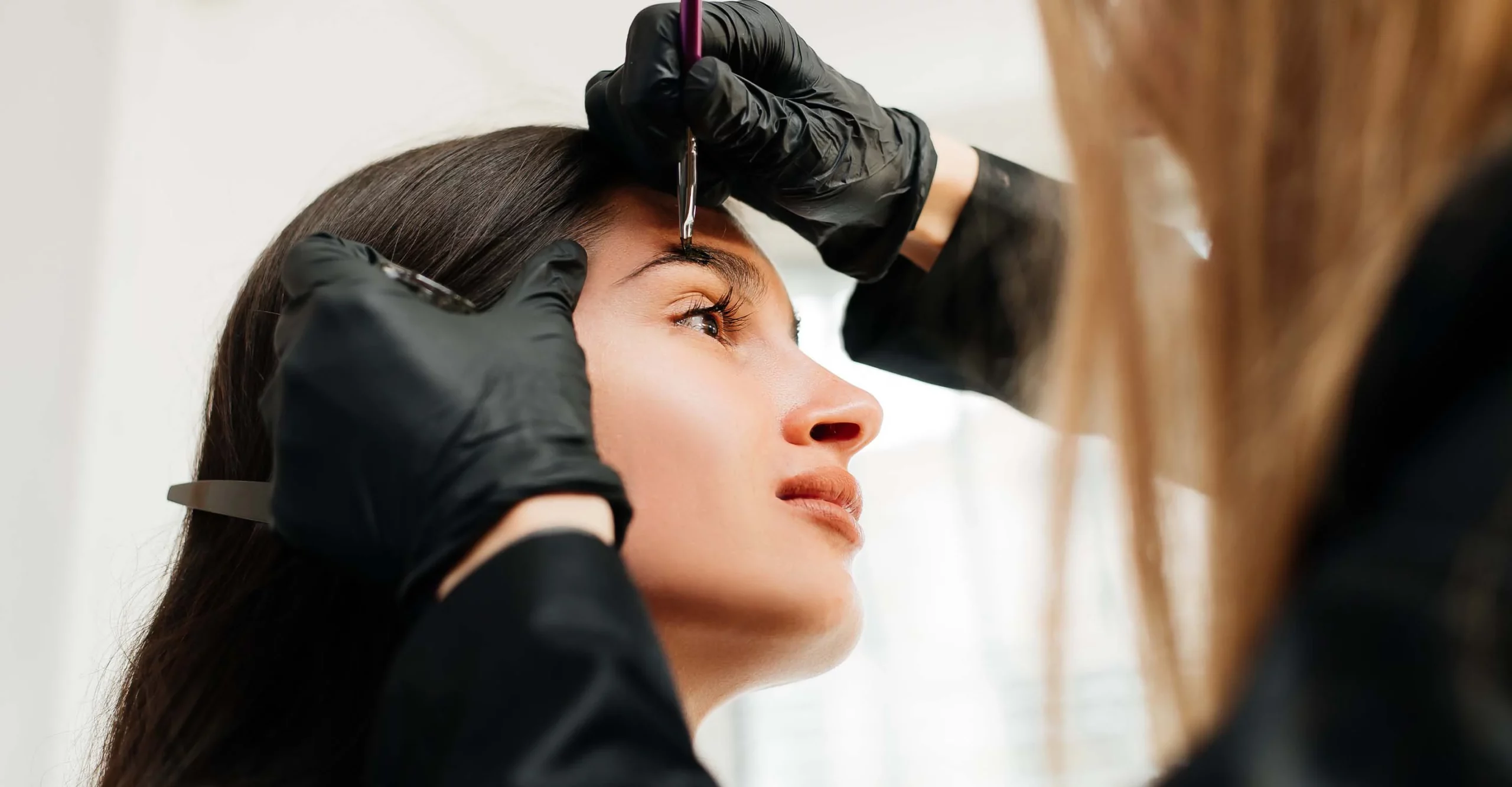What Is Eyebrow Threading + Does it Hurt?

Eyebrow threading is a brow shaping technique that uses thread to lift multiple hairs from the root. It’s a great and natural way to clean up your brows when you’re tired of waxing and plucking. Threading has been around for centuries and originated in the Middle East and parts of Asia. Today, many people turn to threading over other methods because of the perks.
Threading is more precise than other techniques, gentler on skin, and leaves you with easy-to-maintain brows after the appointment. Still on the fence? In our guide, we’ll go over everything you need to know about threading so you can decide if it’s the right choice for you.
How Does Eyebrow Threading Work?
The technician will first clean your eyebrow area to prevent infections. Then, they’ll get a single cotton thread and start twisting it around your brow hairs. These twists will grab your hair and cleanly pull it out from the root.
Threading gives the technician total control of the hairs they remove, so it’s easy to get your ideal shape. The process is quick and can take about 10 to 15 minutes depending on how much you want done.
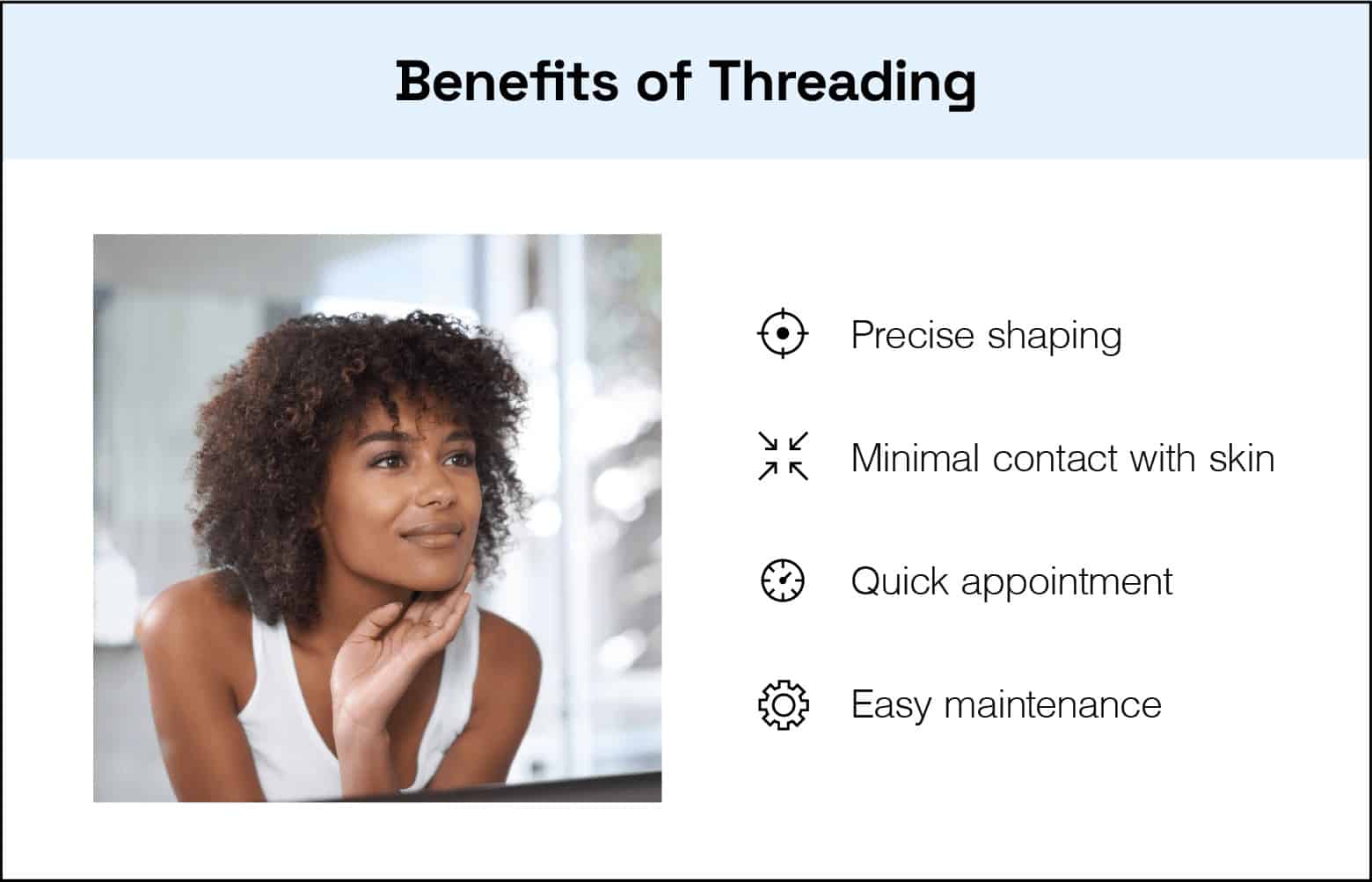
At-home brow maintenance is simple since all your hair grows back at the same time. You’ll probably only need to tweeze a couple stray hairs before your next appointment. Some Pros recommend coming in every few weeks to upkeep your brow shape, but you can ask your tech for tips before booking your next session.
How Does Threading Differ from Other Methods?
Threading is precise and it makes minimal contact with skin, unlike other methods.
Compared to tweezing, shaping will take much less time since the technician is pulling multiple hairs at once. Tweezing is much more time consuming if you’re shaping your brows for the first time in a while.
You’re also less likely to pull and nick your skin with threading. We’ve all accidentally pinched and poked at our skin when tweezing. Those innocent pokes with the tweezers sometimes lead to breakouts and infections. This isn’t an issue with threading since neither the tech nor their tools come in contact with your skin.
Threading is gentler compared to waxing, sugaring, and other topical methods that use a range of chemicals and ingredients. Like we mentioned, threading only uses thread and doesn’t require any other products. This lowers risks of irritation and other reactions — while this is still possible with threading, it’s not as common as with other methods. We’ll cover side effects later in the piece.
There are many other brow services that aim to shape and define brows without removing hair. For example, brow lamination uses chemicals to shape and lift brow hairs. Brow tinting only uses dyes to darken and define your brow’s shape.
How Long Does Eyebrow Threading Last?
Everyone’s hair grows back at different rates, but you can expect your threaded brows to maintain their shape for two to five weeks. Keep a close eye on the calendar after your first few appointments so you can gauge how often you’ll need to see your tech.
Is Eyebrow Threading Painful?
Threading does hurt a little bit and the amount of pain is relative to each person. Some say that threading can be less painful than other methods, like waxing, since it doesn’t pull as much on the skin. Ask around to get some insight from friends and family who’ve had their brows threaded.
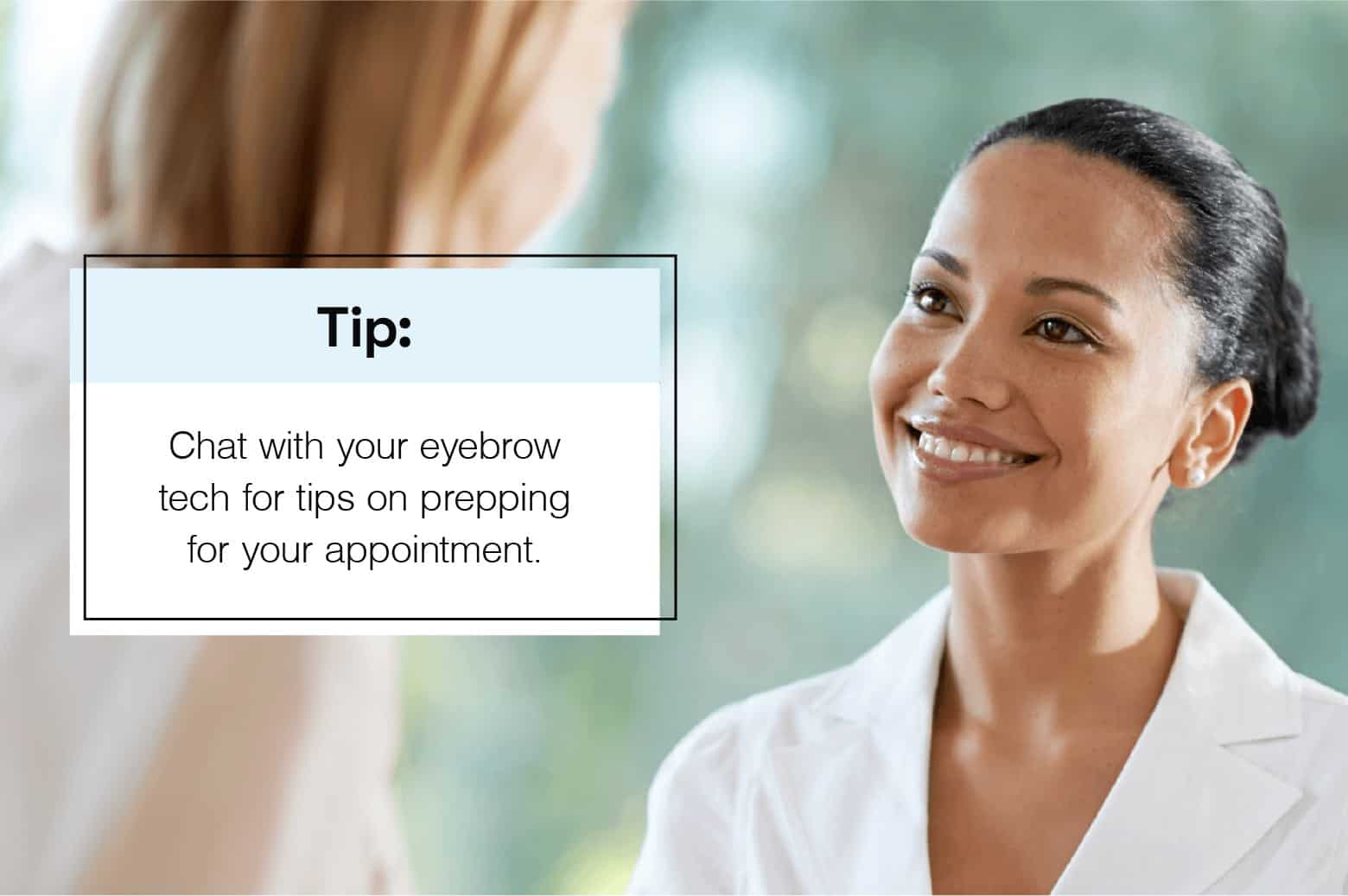
If you’re unsure, you can ask your tech to test on a small patch of hair on your hand or arm to gauge your pain tolerance. Your Pro can also give recommendations for safe, effective numbing creams to use prior to treatment.
Does Threading Work For All Skin and Hair Types?
Threading generally works for all skin and hair types. However, people with sensitive skin may feel a little more uncomfortable afterwards than others.
This method might not be a great fit for you if you’ve recently had cosmetic surgery or something similar that increases your sensitivity. We recommend chatting with your healthcare provider if you’re unsure about what’s best for you.
What Are the Side Effects of Threading?
Like all hair removal methods, lots of people can expect to experience some redness and discomfort after threading. Others may experience skin irritation and minor breakouts. You’re not as likely to experience other side effects that come with other methods, like infection, but it’s still possible.
How Can I Avoid Side Effects?
There are a few precautionary steps you can take to lessen the chances of side effects like breakouts or infections.
Before your appointment, you can use numbing cream like we mentioned earlier. You should also ensure that you haven’t done or taken anything that increases your sensitivity. This includes tanning or taking certain medications. It’s also a good idea to exfoliate your face to clean up dead skin cells and prevent ingrown hairs.
During your appointment, your tech may ask you to hold your lids down so they can get a better angle and lessen irritation. Follow their lead to make this easier for them and potentially less painful for you!
After your appointment, reach for some aloe vera or cooling gel to lessen redness and discomfort. Your tech should offer some, but it doesn’t hurt to have some on hand. For the 24 hours following your appointment, you should also avoid wearing makeup, visiting swimming pools, and doing things that could make you sweat or otherwise clog your pores.
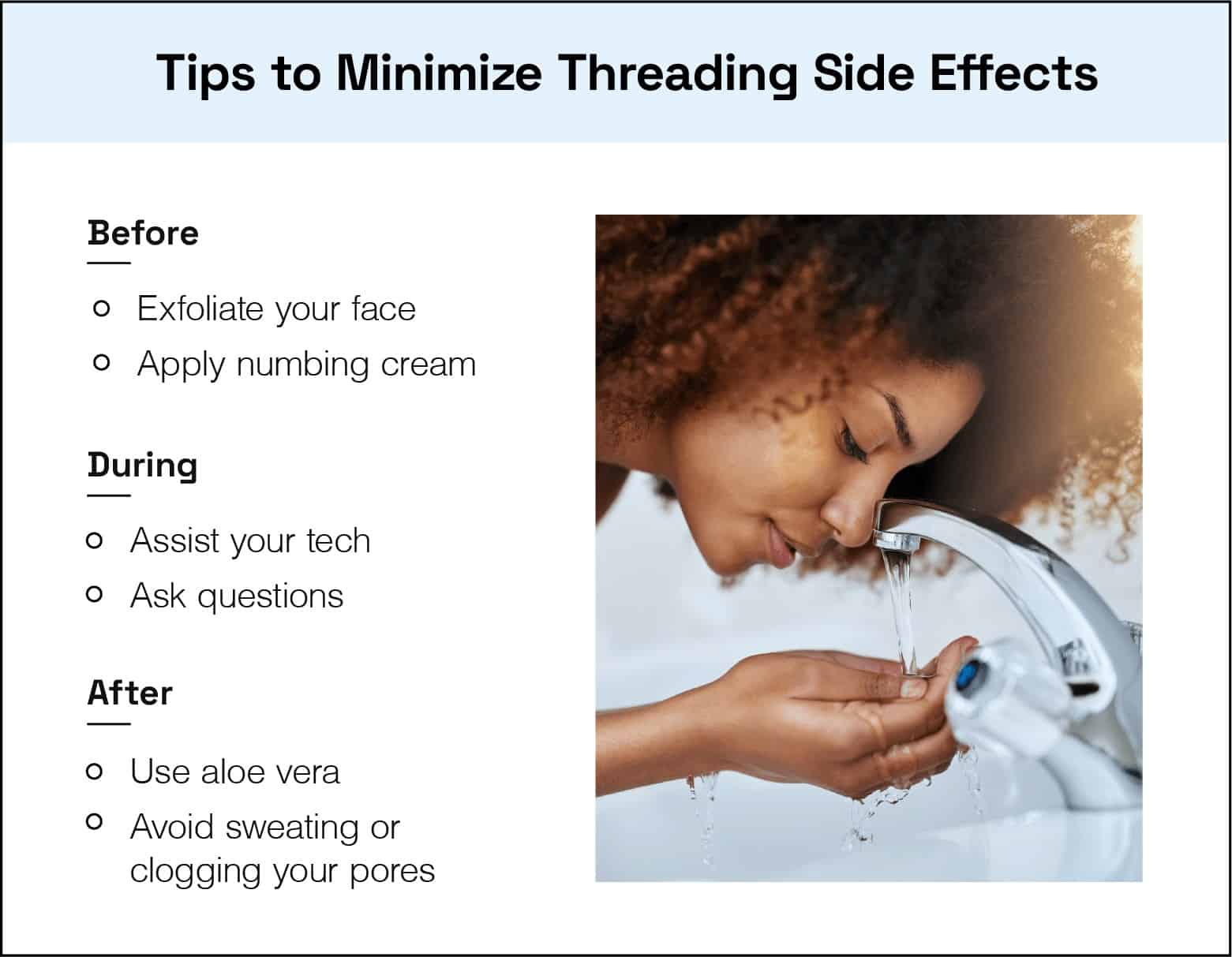
How Much Is Eyebrow Threading?
Brow threading prices range between $10 and $40 depending on where you go. You can also get other parts of your face threaded for different prices.
Some salons offer package deals for full face hair removal or other services, like a brow tint, so shop around with your local Pros to see if you’re interested in squeezing in a few services during your next appointment.
Eyebrow threading is a great route for more precision and when you want to try something different to upkeep your brows. Chat with an eyebrow Pro in your area to learn more and try it out for yourself.
